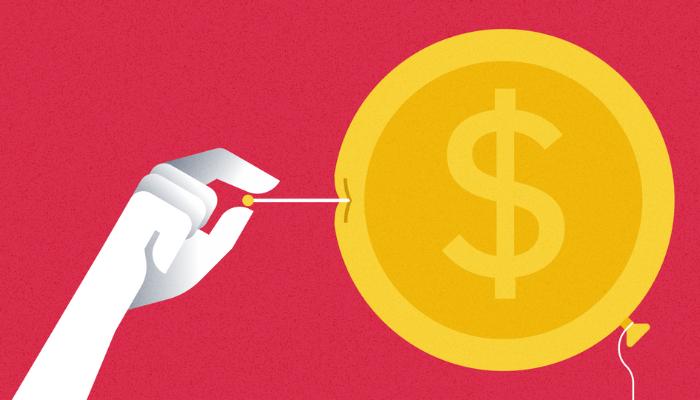Comparison of Demand Inflation and Cost Inflation
Navigating the complex world of economics can be a challenging task, especially when it comes to understanding concepts like demand inflation and cost inflation.
Advertisements
While both are related to the overall increase in prices, their origins and impacts on the economy are distinct.
Advertisements
In this article, we will delve deeply into these two forms of inflation, exploring their definitions, causes, impacts, and control strategies.
Definition of Demand Inflation and Cost Inflation
Before delving into the nuances of demand inflation and cost inflation, it is crucial to understand their basic definitions.
Advertisements
Demand Inflation: Demand inflation occurs when aggregate demand for goods and services exceeds the productive capacity of the economy. In other words, when consumers have more purchasing power than the available supply, prices tend to rise.
Cost Inflation: On the other hand, cost inflation arises when production costs for companies increase, leading them to pass on these extra costs to consumers through higher prices. This can be caused by increases in raw material costs, wages, or transportation costs, among other factors.
Causes of Demand Inflation
Demand inflation, a phenomenon where the overall demand for goods and services surpasses the economy’s productive capacity, is influenced by various underlying factors.

These catalysts range from shifts in consumer behavior to the actions of monetary policymakers and government spending initiatives. Let’s delve into the primary causes of demand inflation and how they impact economic dynamics.
Demand inflation can be driven by various factors, including:
- Increase in Consumer Demand: A sudden increase in consumer confidence or a reduction in interest rates can stimulate consumption, leading to excessive demand for goods and services.
- Expansionary Monetary Policies: When central banks lower interest rates or implement economic stimulus measures, credit becomes more accessible and consumers tend to spend more, boosting demand.
- Government Spending Increases: Government spending programs, such as investments in infrastructure or social assistance programs, can increase aggregate demand and lead to demand inflation.
Causes of Cost Inflation
Cost inflation, characterized by rising production expenses that prompt companies to adjust prices upwards, can stem from various sources.
Factors such as fluctuations in raw material prices, mounting wage pressures, and escalating transportation costs play pivotal roles in driving up production expenses. Let’s delve into the key causes of cost inflation and their impact on pricing dynamics.
The causes of cost inflation may vary, but some of the main ones include:
- Increase in Raw Material Costs: Fluctuations in commodity prices such as oil, metals, and food can increase production costs for companies, leading to price increases.
- Wage Pressures: Increases in workers’ wages can increase labor costs for companies, which may be passed on to consumers in the form of higher prices.
- Transportation Costs: Increases in fuel prices or transportation costs can raise distribution costs for goods, resulting in higher prices for consumers.
Impact of Demand Inflation on the Economy
The ripple effects of demand inflation permeate throughout the economy, impacting various facets of economic activity.
From diminishing purchasing power to fostering inflationary pressures and influencing trade dynamics, demand inflation’s repercussions are far-reaching.
Let’s explore how demand inflation shapes the economic landscape and affects key indicators of economic health.
Demand inflation can have several effects on the economy, including:
- Decreased Purchasing Power: When prices rise faster than wages, consumers’ purchasing power is reduced, leading to a decrease in the standard of living.
- Inflationary Pressures: Demand inflation can fuel inflationary expectations, leading workers to demand higher wages and companies to raise their prices even further, creating an inflationary cycle.
- Imbalances in Trade Balance: If domestic demand exceeds productive capacity, imports may increase, leading to trade deficits and putting pressure on the local currency.
Impact of Cost Inflation on the Economy
The ramifications of cost inflation extend far beyond mere pricing adjustments, profoundly impacting the economic landscape. From dwindling profit margins to shifts in income distribution, its effects permeate various sectors.
Moreover, cost inflation can catalyze a deceleration in economic growth, impeding consumption and investment.
Let’s delve into the intricate web of consequences wrought by cost inflation on the economy and its implications for overall stability.
Cost inflation can also have significant consequences for the economy, including:
- Reduced Profit Margins for Companies: Rising production costs can reduce companies’ profit margins, which may lead to layoffs and reduced investment.
- Income Redistribution: If companies pass on cost increases to consumers in the form of higher prices, this can result in a redistribution of income from consumers to business owners.
- Slowdown in Economic Growth: Cost inflation can lead to a decrease in consumption and investment as consumers and businesses face higher prices, which can result in a slowdown in economic growth.
Demand Inflation and Monetary Policies
The relationship between demand inflation and monetary policies is complex, but central banks generally use tools such as interest rates to control inflation.
If demand inflation is increasing, central banks may raise interest rates to discourage excessive consumption and investment, thus reducing inflationary pressure.
Relationship Between Cost Inflation and Fiscal Policies
On the other hand, cost inflation is more directly related to fiscal policies, which govern government spending and taxation.
If production costs are increasing due to wage pressures or rising raw material costs, fiscal policies may indirectly affect these factors through labor regulations, subsidies, or tax incentives.
How to Identify Demand Inflation
Pinpointing demand inflation amidst the economic landscape poses a formidable task, yet certain telltale signs provide valuable insights. From escalating consumer prices to burgeoning consumption and investment, these indicators offer vital clues.
Moreover, inflationary pressures emanating from cost increases passed on to consumers can serve as red flags. Let’s delve into the strategies and indicators for identifying demand inflation amidst the economic milieu.
Identifying demand inflation can be challenging, but some common indicators include:
- Rise in Consumer Prices: A steady increase in consumer prices may indicate that demand is outstripping supply.
- Inflationary Pressures: If companies are reporting cost increases and passing these increases on to consumers, this may be a sign of demand inflation.
- Increase in Consumption and Investment: If consumption and investment are growing rapidly, this may indicate that demand is heating up the economy.
How to Identify Cost Inflation
Unraveling the presence of cost inflation demands meticulous scrutiny and astute observation of key indicators. As companies grapple with soaring production costs and dwindling profit margins, red flags emerge.
Moreover, wage pressures and escalating input expenses serve as critical barometers of cost inflation. Let’s delve into the strategies and indicators essential for identifying cost inflation within the economic realm.
Identifying cost inflation also requires careful analysis, and some indicators to watch out for include:
- Increase in Production Costs: If companies are reporting increases in raw material costs, wages, or other inputs, this may indicate cost inflation.
- Reduced Profit Margins: If companies are struggling to maintain their profit margins due to rising costs, this may be a sign of cost inflation.
- Wage Pressures: Significant increases in wages may indicate that labor costs are rising, which can lead to cost inflation.
Strategies to Control Demand Inflation and Cost Inflation
Controlling demand inflation and cost inflation may require a combination of monetary and fiscal policies, as well as specific measures to address the underlying causes of each type of inflation. Some examples of strategies include:
- Restrictive Monetary Policies: Increasing interest rates to discourage excessive consumption and investment can help control demand inflation.
- Responsible Fiscal Policies: Maintaining a balance between government spending and fiscal revenues can help prevent inflationary pressures arising from budget deficits.
- Income Policies: Labor regulations and wage negotiations can help contain excessive increases in labor costs that drive cost inflation.
By understanding the differences between demand inflation and cost inflation and their implications for the economy, policymakers and investors can be better prepared to tackle economic challenges and implement effective inflation control measures.





